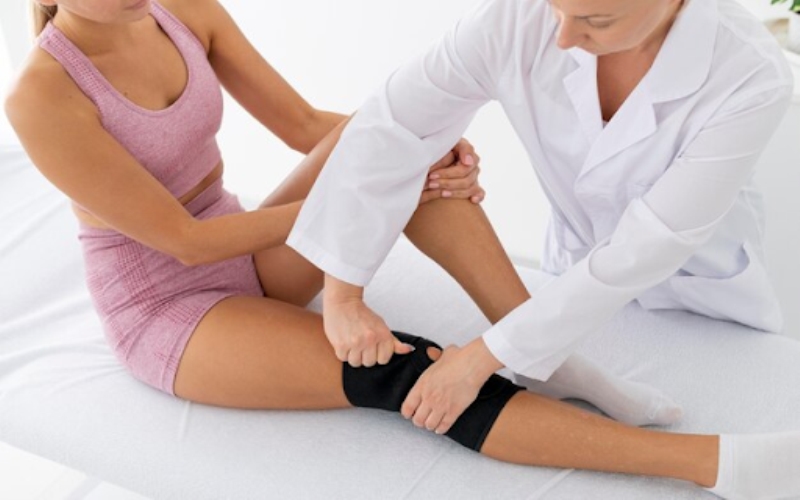Injuries, whether acute or chronic, are an inevitable part of an active lifestyle or athletic pursuit. While rest and traditional medical interventions are the cornerstones of recovery, there is a growing interest in the role of peptides in the rehabilitation process. Peptides, which are short chains of amino acids, have been found to have significant potential in accelerating recovery and healing. This article will delve into the ways peptides can aid in recovering from an injury, how they work, and the best practices for incorporating them into your recovery regimen.
Understanding Peptides and Their Role in the Body
Peptides are naturally occurring biological molecules found in all living organisms. They play a key role in various biological functions, including hormone production, immune response, and cell signaling. When it comes to healing, certain peptides have been found to promote tissue repair, reduce inflammation, and enhance recovery.
The Mechanisms Behind Peptides in Injury Recovery
The body’s natural healing process is complex and involves various stages, including the inflammatory response, tissue repair, and remodeling. Peptides can influence these stages in multiple ways:
- Anti-Inflammatory Action: Some peptides exhibit anti-inflammatory properties, which can help reduce the initial inflammation that occurs immediately after injury. By modulating the body’s inflammatory response, peptides may minimize damage to surrounding healthy tissues and promote a more favorable healing environment.
- Stimulating Growth Factors: Certain peptides can stimulate the production of growth factors, which are vital for tissue repair. Growth factors such as IGF-1 (Insulin-like Growth Factor 1) can accelerate the healing process by promoting cell proliferation and angiogenesis, the formation of new blood vessels.
- Enhancing Protein Synthesis: Peptides can increase protein synthesis, which is crucial for tissue repair. They can help in the rebuilding of muscle fibers and other tissues that may be damaged due to injury.
- Regulating Hormone Release: Some peptides can influence the release of hormones like human growth hormone (HGH), which has been associated with improved recovery rates.
Popular Peptides Used in Injury Recovery
Several peptides have gained popularity for their potential benefits in injury recovery:
- BPC-157: This peptide is known for its powerful regenerative effects and has been shown in studies to enhance the healing of many different types of tissues, including muscle, tendon, and even damaged ligaments.
- TB-500 (Thymosin Beta-4): TB-500 is recognized for its ability to upregulate cell-building proteins. It also plays a role in building new blood vessels, muscle tissue fibers, and cell migration necessary for proper wound healing.
- GHK-Cu (Copper Peptide): GHK-Cu is primarily known for its skin rejuvenation properties. However, its ability to promote collagen and elastin production may also help in repairing damaged tissues.
Integrating Peptides into Your Recovery Protocol
The use of peptides should be approached with caution and under the guidance of a healthcare professional. Here are some steps to consider when integrating peptides into your injury recovery protocol:
- Consultation with a Medical Professional: Before starting any new treatment, it’s important to consult with a healthcare provider who is knowledgeable about peptides and their use in injury recovery.
- Dosage and Administration: Peptides can be administered in various ways, including injections, topical creams, or oral formulations. The method of administration and dosage will depend on the specific peptide and the nature of the injury.
- Monitoring and Evaluation: Regular monitoring is crucial to evaluate the efficacy of the peptide treatment and make any necessary adjustments.
- Combining with Conventional Treatments: Peptides are often used in conjunction with traditional treatments, such as physical therapy and medication, to maximize recovery.
Safety Considerations and Potential Side Effects
While peptides can offer benefits, they are not without potential risks and side effects. Adverse reactions can range from mild to severe and may include irritation at the injection site, flu-like symptoms, and hormonal imbalances. It is also important to source peptides from reputable suppliers to ensure quality and purity.
Research and Evidence Supporting Peptides for Injury Recovery
The body of research on the use of peptides for injury repair is growing. Numerous animal studies and a growing number of human trials have shown promising results. However, it’s important to note that the research is still in the early stages, and more comprehensive studies are needed to fully understand the implications of peptide therapy in humans.
Incorporating Peptides with Lifestyle Modifications
Recovery from injury is not solely reliant on treatments like peptides. It also involves lifestyle modifications such as:
- Adequate Nutrition: A balanced diet rich in proteins, vitamins, and minerals is crucial for tissue repair.
- Hydration: Keeping the body well-hydrated is essential for optimal cellular function.
- Rest: Adequate sleep and rest are necessary for the body’s natural healing processes.
The Future of Peptides in Injury Recovery
As research continues to evolve, the potential of peptides in injury recovery looks promising. Innovations in peptide therapy and its applications could potentially offer more targeted and effective treatment options for those seeking to enhance their recovery process.
In conclusion, the use of peptides presents a novel approach to injury recovery. By understanding their mechanisms, adhering to safety protocols, and integrating them with a comprehensive recovery plan, individuals may experience enhanced healing and a quicker return to their normal activities. However, it’s essential to remember that peptides should be used responsibly and always under professional supervision.


